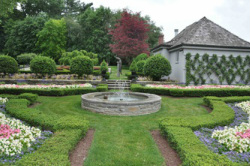 The gardens in the Main Line continue to astound me. Dodo Hamilton's 10 acre estate is tucked away behind a busy commercial section, you would never know it existed. There are seven full time gardeners who assure the plethora of yew, box and berberis topiaries and hedges are kept immaculately clipped. The greenhouse complex ensures there are fresh flowers daily for the house. Straight axis, great statures, perennial, rose and grass gardens, annuals galore, a fabulous pool and pool house, vegetable and cutting gardens, chicken palace, and touches of whimsy that made the garden very unique. One of the world's iconic gardens, Sissinghurst was a collaboration between Vita Sackville-West and her husband Harold Nicolson. Vita viewed what was described in the sales brochures as a rather unpromising Victorian farmhouse with some "picturesque ruins in the grounds" on a sunny spring day in 1930. It was love at first sight: 'The place, when I first saw it on a spring day ... caught instantly at my heart. It was Sleeping Beauty's Garden: but a garden crying out for rescue.' Like all gardeners it wasn't the farmhouse that captured her imagination but the romance of decay and the remains of grandeur which to her was preferable to grandeur itself. The soft pink bricks, huge old barn, romantic moat, and long views over the countryside entranced her. Even more importably the tower caught her imagination - she wrote that she had dreamed of writing in her own tower since childhood. Harold Nicolson saw it a couple of days later in the rain and was much less enamored, writing in his diary that 'it all looks big, broken-down and sodden'. He complained, only half jokingly, that for the amount of money it would cost them to renovate it they could buy a palace with central heating, hunting park and lodges. A close friend, the critic Raymond Mortimer wrote "we all thought Sissinghurst a gloomy place in hideous flat country with commonplace cottages and no view and couldn't think why they wanted it." Vita won Harold over and their collaborative restoration created one of the most photographed gardens in England. Within five years of purchasing it Harold had the garden's structure in place and Vita then took over as plantswoman. In 1938 they opened the garden to the public for the first time for just two days a year under the National Gardens Scheme - it is now open almost daily and attracts around 150,000 visitors each year. As fortune would have it Vita and Harold's grandson's second wife is Sarah Raven, a well known English garden designer and writer. She has written a wonderful new book Sissinghurst: Vita Sackville-West and the Creation of a Garden which is being released in America in November. There have been so many books written about Sissinghust I was ready to give this one a miss despite being a fan of Sarah Raven's writing but opened a copy in Sissinghurst's gift shop and was hooked. The book is a complete delight, wonderfully written and full of stunning photographs both old and new and is everything I think a gardening book should be. Vita wrote a weekly gardening column for the Observer newspaper from her perch in Sissinghurst tower for 15 years between 1946 and 1961. Although nothing was overtly included about Sissinghurst in her columns, everything she wrote related to it and Sarah Raven's book quotes extensively from these articles. Vita's plant descriptions are fantastic, witty, affectionate, informative and funny. I really don't like Billbergia nutans, commonly called Queen’s Tears, but after reading her endearing description wanted to rush out and buy one: ‘It is more like a crazy jeweller’s dream than a flower, an immensely long earring in the most fantastic mixture of colours... with a 4-in-long dingle-dangle of green, blue, pink, and yellow, a thing to swing from the head-dress of a Balinese dancer or from the ear-lobes of a beauty in a Persian miniature.’ Vita entices her readers to plant her favorites and place them in her garden as she has in Sissinghurst - "May I put in a good word for dill?" Or of old roses: "They load the air with the true rose scent… Have I pleaded in vain?" Of Jasminum polyanthum: "I hope I have said enough to stir temptation." She advised: "Always exaggerate rather than stint." Why plant one lily when a 1000 would do, truly a woman after my own heart! I now plan to grow Tweedia caerulea in a verdigris pot, Helleborus niger as a houseplant at Christmas, and to introduce the incense plant Humea elegans into my life. Many of Sissinghurst's plants are for sale in the garden shop, strategically placed by the entrance parking lot. It was very difficult to resist picking up the fabulous climbing rose 'Meg' that scrambled gloriously over the front entrance, even though I had no UK garden to plant it in. Sissinghurst was an all consuming passion for Vita, she wrote in one letter to a reader "For the last 40 years of my life I have broken my back, my fingernails, and sometimes my heart, in the practical pursuit of my favourite occupation." For Harold it was a place where he could walk unobserved and quietly "read the Sunday papers while sipping China tea". Just before she died, Vita wrote to Harold "We have done our best and made a garden where none was". They would both be overjoyed that their garden still thrives and remains an incredible testimony to their joint artistic vision and collaboration. Not a garden itself but a major even on the English gardening calendar. Hot on the heels of the Royal Horticultural Society's Chelsea Flower Show in May, the Hampton Court Flower show takes place in July in the spectacular gardens of Hampton Court Palace. Spread over 34 acres with more than 500 exhibitors it is the largest flower show in the world attracting around 130,00 visitors and features world class gardens as well and marquee after marquee showcasing work and plants by some of the countries top designers and nurseries. There are even more opportunities to buy plants and garden accessories than Chelsea, but like the former show the final-day sale on Sunday is a fabulous time for bargains - plants, fresh produces and gardening equipment. Unlike the venerable Chelsea show that has been running since 1862, the Hampton Court Show is a real newbie, dating back only to 1993 but it was a great success from the start. It now attracts around 130,000 visitors - still slightly less than Chelsea whose numbers are limited by the 11 acre site and still plays second fiddle to it's elder sibling. In many ways I now enjoy it more, the visitors are mainly British and nearly all avid gardeners, it is far less crowded and has a different character, focusing more on environmental issues, growing your own food and vegetables and cookery as well as the usual smattering of wild and whacky gardens along with the horticulturally serious offerings. This year the show will divided into three zones, with gardens and plants reflecting themes of Grow, Escape and Inspire:- In Grow enthusiastic gardeners salivated over numerous nursery displays and plant stalls and took advantage of the RHS advisors on-hand offering horticultural tips to take back to their own garden and a schools Scarecrow competition commemorated World War 1. Escape encouraged visitors to get into the community spirit or escape into the countryside - there was a Growing Taste marquee with one foods and produce and a cookery theater where celebrities and experts including the Great British Bakeoff's Mary Berry demonstrated their homegrown recipes, a selection of Show gardens, trade stands, a Country Living Magazine Pavilion with 120 artists selling their wares, a new Community area where you could get ideas for you own front garden and inspiration for making the most of small spaces and a celebration of 50 years of RHS Britain in Bloom. Inspire attempted to prompt visitors to re-think their preconceptions of contemporary garden design, with horticultural creations pushing boundaries and championing innovation. The Conceptual Gardens were designed around the theme of seven deadly sins - one garden for each sin. I can't say I was tempted to take much from them for my own garden but they were brilliantly original - no doubt ruffling many traditionalists feathers. There were numerous other show gardens of differing inspiration, some great trade stands and a new turf sculpture competition with entries from the likes of Question Time presenter Matthew Biggs and RA trained sculptor John Humphreys that showcased creative and contemporary alternatives to the traditional lawn. 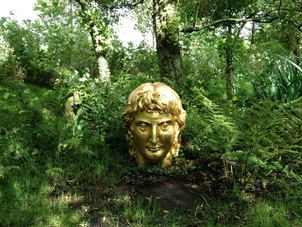 The late Ian Hamilton Finlay's masterpiece in the Peatland Hills south of Edinburgh - and I think my favorite garden. Incorporated in the five acres are over 275 artworks by the artist that he created in collaboration with numerous local masons and craftsmen, and includes concrete poetry in sculptural form, polemic and philosophical aphorisms, sculptures, temples, carved bridges and wonderful mixed media paths and walkways. It is a remarkable place for contemplation, intellectual complexities of meaning sentiment and wit and aesthetic enjoyment. Open only on Wednesday, Friday and Sunday afternoons, 2:30-5pm, from 1st June to 29th September, if you are visiting Scotland in the summer it really is worth the effort. Ian Hamlton Finlay and his wife Sue Finlay started the garden in 1966, calling it Stonypath but renaming it "Little Sparta" in 1983 in response to Edinburgh's nickname the Athens of the North and playing on the ancient rivalry between the Ancient Greek cities of Athens and Sparta. When we first visited the garden in 2005 Finlay was still living there, the garden has changed little since his death, still a marvelous interplay between avant-farde experimentation, Scottish whimsy and wit and English landscape tradition. Finlay regard this 'garden poem' as his greatest work and defined the relationship between the poem-objecs and their surroundings: “Usually each area gets a small artefact, which reigns like a small deity or spirit of place. My understanding is that the work is the whole composition - the artefact in its context. The work is not an isolated object, but an object with flowers, plants, trees, water and so on". It was his wife who planted and cultivated the majority of the garden and she described her husband's creative process in creating the concept of the garden in her memoir 'The Planting of a Hillside Garden': “The learning process. The love involved in this process. That loving absorption - the day to day tending of the poems. Their immediate surrounding areas, whether paved, grassy or covered with plants, always needed a lot of individual attention in the summer" 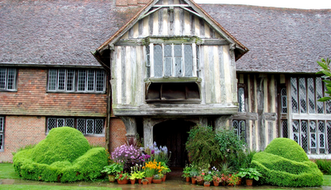 Great Dixter began life as a Gertrudy Jekyll inspired Arts and Crafts garden surrounding an Edwin Lutyens house that was bought by the Lloyd family just before the First World War. It became one of the most interesting, innovative and fun gardens in England, thanks to the eccentric care of Christopher Lloyd (known as Christo) one of England's great gardener’s and garden writer and his head gardener Fergus Garrett. The garden and manor house have now been open to the public for nearly six decades. Located in the East Sussex countryside, less than 12 miles from Sissinghurst, the semi-formal grounds are a completely different gardening experience. Like Sissinghurst there is a strong structure with imaginatively topiaried yew hedges and Yorkstone paving but the plantings are an exuberant exercise in planned imperfection with a seasonally changing tapestry of vibrant colors and textures that change annually. When Christo was alive, Great Dixter was his plant nursery, living laboratory, and the setting for his mid-life rebellion after the death of his overbearing mother but beloved mother Daisy. Finally alone to run his own bath and shape the garden to his imagination, he shocked the gardening world by digging over the traditional rose garden and turning it into an exotic sub-tropical glade of fantastic foliage spiked with lurid color, all documented in his weekly column in Country Life. I last visited Great Dixter on a wet May afternoon in 2006, just four months after Christopher Lloyd’s death. The British gardening world was holding its breath, not knowing if the garden could survive financially without Christo, and if it did survive wanting it to stay exactly the same – like an eccentric adored friend left to grow old gracefully. Fergus was in the nursery’s potting shed, and regaled us with some great stories of Christo, they had shared a vision of the garden and had both been keen innovators in the choice and combining of unusual plants. Fergus was not sure at that point what the future held for him at Great Dixter, but had obviously been extremely fond of Christo and keen to make the garden work going forward although he felt that as a living landscape it should continue to develop if it was to maintain it’s place in garden history. Eight years on it is clear the Great Dixter Charitable Trust, formed to ensure the garden’s financial security, has shared Fergus’s vision and is looking to the future rather than preserving the past. Thanks to this Charitable Trust, Christopher Lloyd’s legacy is being passed on by training future gardeners in his inspirational style, encouraging exuberant, experimental, planting concoctions that highlight the freedom of expression Christo was famous for - fabulous swathes of texture, scale and texture. It is hard to take in everything at once, especially in late summer when the garden is reaching it’s exuberant peak. There is the high garden, the lavender garden, the sunken garden, the topiary lawn, the tropical garden, the 300ft long border, a horse pond with slopes of long grass that call out for summer picnics, and the meadow garden which Fergus is currently expanding. Every aspect has a play of scale and perspective and color combinations that take your breath away. No planting combination is repeated exactly year to year - even combinations that prove to be a stunning success. The horticulture students that converge from all over the world to study in the gardens quickly learn the only rule is that there are no rules – just an awareness of place. Nothing is planned on paper, all plants are grown from seeds in the nursery and the students are encouraged to take risks, juggle timing and push creativity. Fergus, like Christo, is a horticultural gambler, juggling houseplants with dahlias, echiums, poppies and self seeding Verbena bonariensis and somehow making it all work. Each bed at Great Dixter undergoes major replanting at least once a year, twenty tons of homemade compost are added until the soil levels are so high the top layer is scraped off and the dark rich organic soil turns the gardens into jungles that exuberantly burst their boundaries and plunge to the edge of horticultural insanity. I think I would have terrible garden anxiety if I moved to Winchelsea. It is a beautiful medieval town on the East Sussex coast between Hastings and Rye that was founded in 1288 by Edward 1. For nearly 200 years, as a Cinque Port, it was a major trading center, now all that remains of that time are the medieval merchants' cellars and the old streets, built on a grid system, behind whose old walls are the Secret Gardens of Winchelsea. These gardens are open twice a year on the National Gardens Scheme. It's another date for my bucket list, but just walking around town on a non-open day looking at front doors and having an occasional glimpse of the oasis behind walls and open garden gates showed there were no non-gardeners in residence. The pressure to garden when living there must be intense! 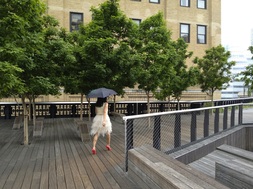 I could not see what all the fuss was about the first time I visited the High Line. It all seemed rather drab, too much grass, too many dull mauves and pinks, too little to lift the soul. This time I was staying in NY in a hotel overlooking the west end of the line and sitting on the patio sipping a cocktail looked down and saw the ribbon of green running above the streets, thonged with people strolling, sitting, kissing. This time I saw what the fuss was about. The mile long plantings along the former rail line on Manhattan’s West Side are now in their fifth year and attract more than 5 million visitors a year. They have had a profound effect on the street-scape and real estate market in the area. Any peace the planners imagined is currently destroyed by the constant din of machinery and jackhammers as new housing developments rear up along the borders. Longwood trained Thomas Smarr is now in his second year as director of horticulture for the park. I picked up a brochure from the Friends of the High Line as I entered the line at the entrance by my hotel and read that they “seek to engage the vibrant and diverse community on and around the High Line”. The diversity of plant life attracted a diverse human crowd, though the few days I wandered the line I saw surprisingly few birds and a volunteer gardener told me they had no trouble with rabbits or groundhogs - wildlife that can wreck havoc in my own garden - as the line is too high up an inaccessible. The main beds of the High Line are built up about 6” above the walkway, but the soil depth is only 18” which does not seem deep enough for tree roots although the birch,s sumach and magnolia virginiana seem to be doing fine at the moment. The beds are stunningly planted and appear to be regularly weeded and consistently watered with a very high-tec system of nosiness and underground irrigation. Truly back to nature and sustainable this is not. In fact there ar eight full-time gardeners and an army of volunteers employed to keep it looking good..The original planting design was a collaboration between James Corner Field Operations and Piet Oudolf whose trademark planting palette is very apparent, supplemented with wild plants of the now defunct rail line which were assessed to see which could be added to the new plantings. The working rule was that fifty percent of the plantings would be natives, although New York City parks have recently dictated a law that 75% of plants should be native in new plantings - hopefully the next phase of the High Line will be allowed to be slightly more flexible as this seems like a rather silly restriction. In July the echinaceas, rudebeckias and other native perennials were in full flower and the planting schemes were stunning, I can imagine it will be even more vibrant in the fall when the sumachs, grasses and drifts of asters reach their glory. The volunteer I spoke to told me there were also 1000s of spring bulbs - not just natives but 10 types of tulips and the ice-white crocus Ard Schenk. To ensure adequate planting coverage the perennials were planted as small plugs and packed in at a higher density than in a private garden. They are immaculately maintained - the mile long track has an annual budget of over $8 million a year in running costs so not exactly a plantings project feasible for most homeowners. I loved the zigzag shaped beds which tapered into the hard surface with little channels, I also thought the printed plant lists and lack of labels was probably a good idea aesthetically although slightly annoying to have to refer to the lists whenever I wanted to find a cultivar I adored. I also adored the wooden-slatted deck chairs, occupied day and night by New Yorkers and the way the sections blended into each other changing moods with the plantings. I found myself drawn back, first thing in the morning before the conference I was attending and then again on the walk home as evening turned to dark and the beds were spot-lit and luminescent.  One of Britain's great Arts and Crafts gardens, Hidcote was actually crated by an American horticulturist, Major Lawrence Johnston. Situated int the north Cotswolds, very close to Stratford-upon-Avon it is a fabulous place for gardening inspiration. There are numerous colorful, intricately designed outdoor rooms, precisely clipped yew hedges and topiary, a maze of narrow paved pathways, secret gardens, fabulous vistas and plants collected from Johnston's many plant hunting trips to exotic locations. 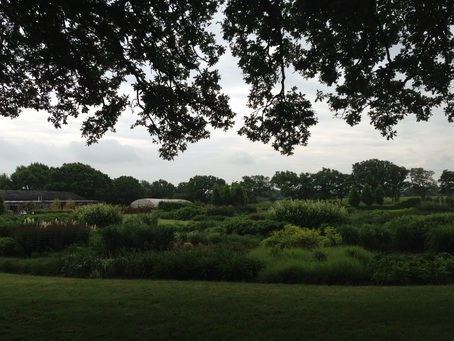 Sussex Priarie Gardens was started by Pauline and Paul McBride in May 2008 from a field near Henfield in West Sussex. Astoundingly they planted it in two weeks with the help of 40 friends – including the then ambassador to Luxembourg. Some cooked, some planted, all had a fabulous time. Paul studied horticulture in Scotland and then worked as a gardener for the Commonwealth Graves Commission in France, where he met Pauline who was sorting out accomodations for British gardeners coming to maintain cemeteries from the First and Second World Wars. They worked for 12 years for a family outside Luxembourg, creating a 30-acre garden for them before embarking on their own adventure. They were inspired by Piet Oudolf, and actually gardened beside him to create a 54,000 sq ft border with over 20,000 plants. They familiarized themselves with his favorites - Sanguisorba officinalis, Deschampsia cespitosa 'Goldtau’, various thalictrums and molinias are major players in their own garden. The Sussex land was part of Pauline’s late father’s farm. They planned it in a romantic, naturalistic style, using bold groups of flowering plants and grasses that as Paul has said “have a close relationship in form, foliage and simplicity of flower with native or non-native counterparts”. The colors used are soft and muted with an informal style that blends with the Sussex landscape and the four acres of borders attract a rich diversity of wildlife. When they inherited the land there was a scant 3” of topsoil over yellow/blue clay. To encourage plants and not weeds they drained the entire site, putting in drainage pipes every 33’ and ploughed the beds before rototilling in 1,000 tons of grean waste they got free from a composting firm to ensure a rich tilth that their amateur gardening friends could plant into. The planted over 30,000 plants, 90% of which they propogated themselves, and they continue to apply a thick mulch of green waste annually – although the they let it sit for two years before using it as it is so rich. This has helped keep the weeds down, but they also have two full time gardeners and an army of volunteers. The beds are designed in a broken spiral formation with a wide path down the center, with a field of sheep at one end and a great tea room/nursery/gift shop at the other. The borders themselves are planted with huge block plantings of the same species with 3’ paths running through them that narrow as the season progresses. The plants vary in height due to the differences of soil fertility, some clumps such as Persicaria polymorpha, are giants and you are dwarfed walking among them, the proximity of the plantings means you can experience everything close up – sounds, fragrances, colors, shapes. As the perennials chosen mature quickly the garden is never static. The beds also have different characteristics. The pond bed is aptly named for the three ponds in it, the North and South Mounds were created from the drainage soils and are mainly purple and yellow colors, the Cleat Border was inspired by James van Sweden and Wolfgang Oehme and is composed of large blocks of grasses and rudbeckieas. The “Wee bed” had a plethora of echinaceas in candyfloss colors. All the beds are punctuated by sculptures, either commissioned or added by local artists. Some of them such as the wire balloons on the lawn are designed and made by Pauline – my favorite were flowers made from old vinyl records that dot one of the central beds. There are also sheep, pigs and chickens; a bed and breakfast; a garden design business; and an enticing nursery. I couldn’t resist buying a wonderful sheep tea cosy knitted by Pauline’s mother from the wool from their flock. Sussex Prairies (sussexprairies.co.uk) |
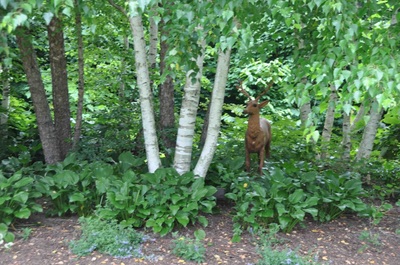
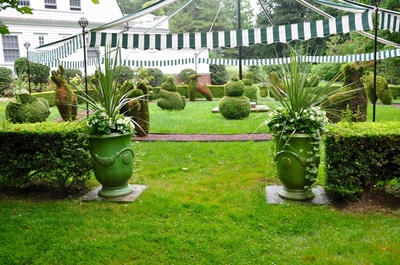
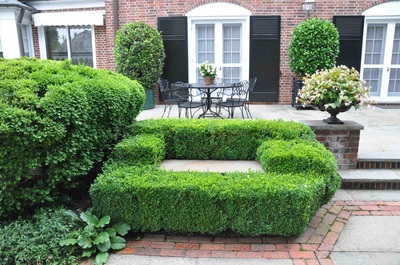
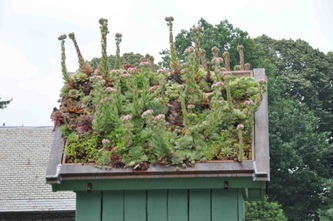
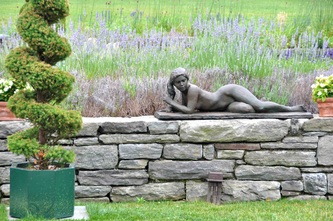
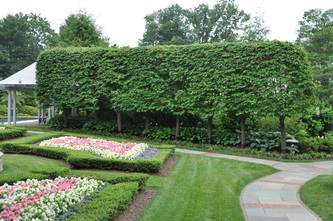
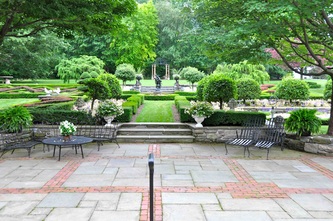
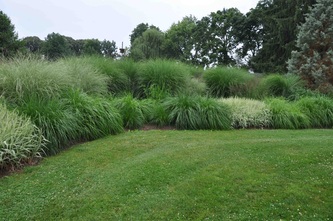
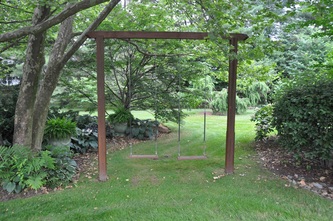

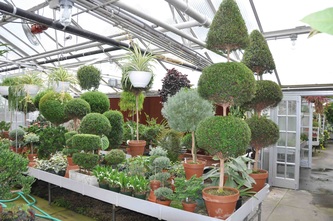
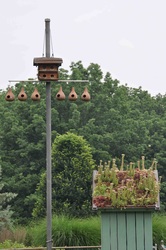
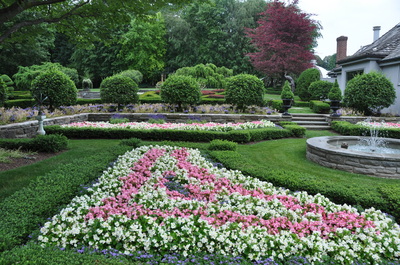
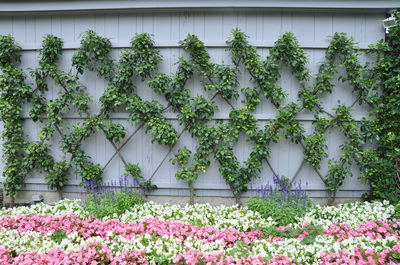
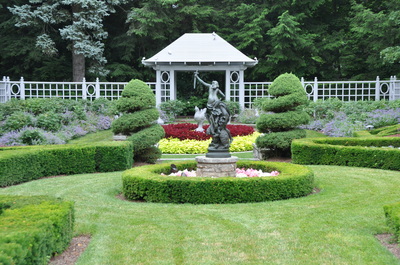
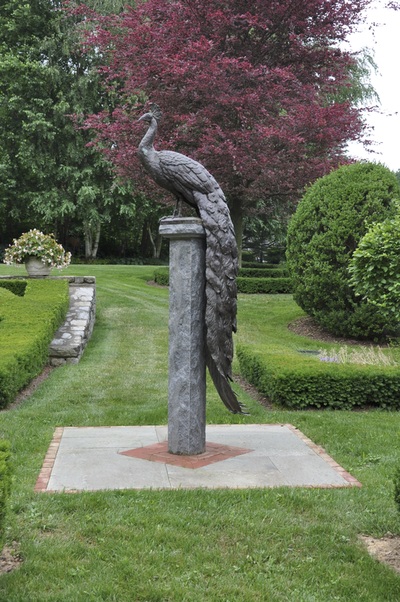
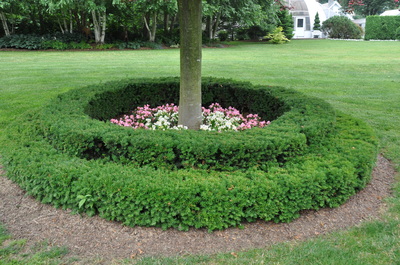
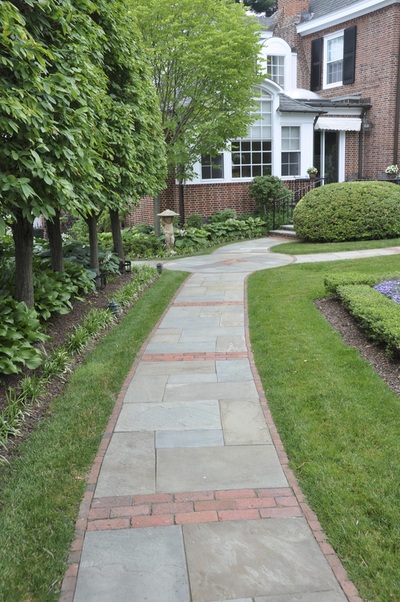
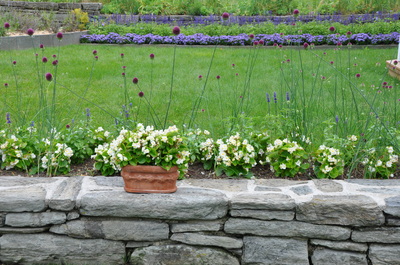
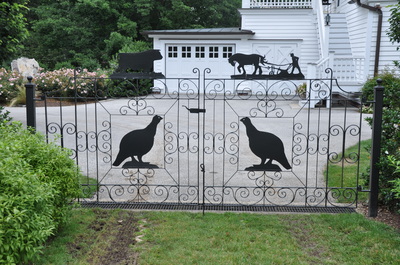
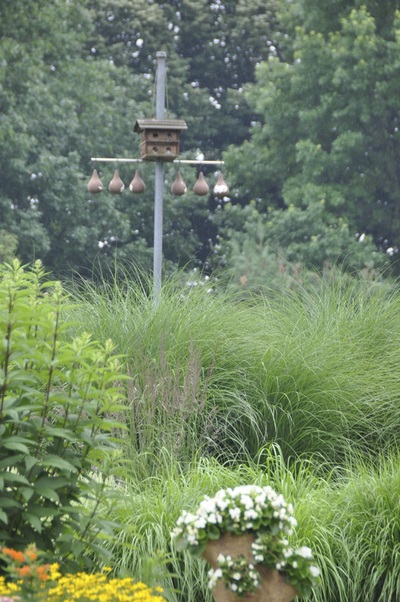
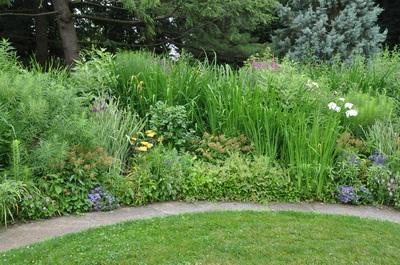
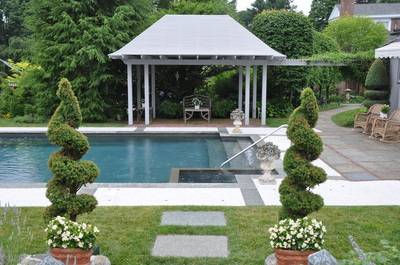
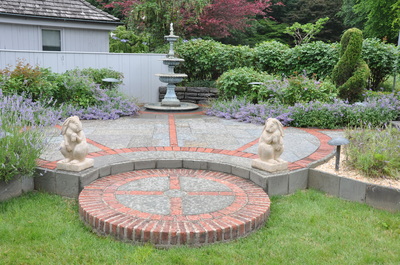
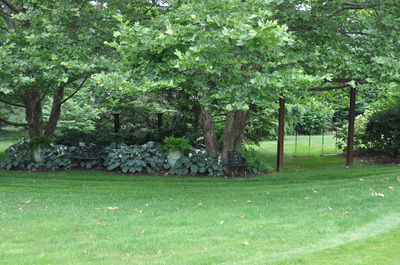
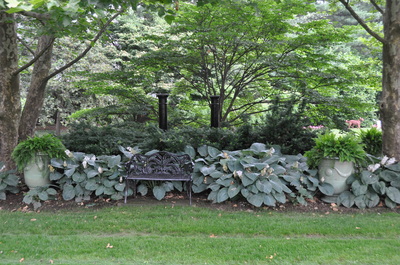
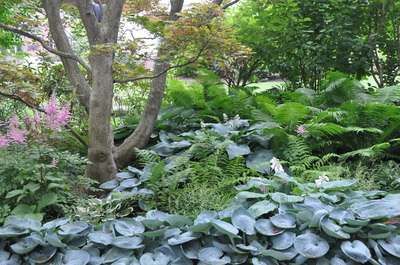
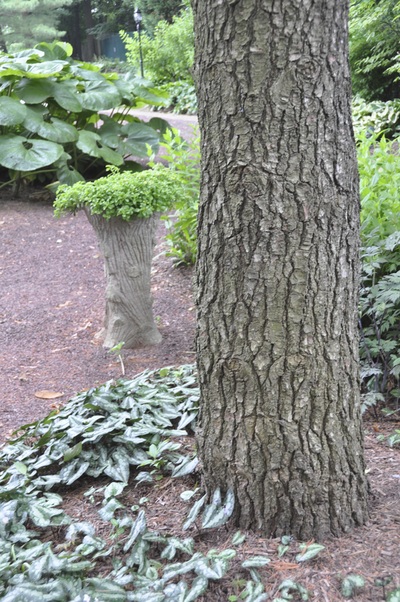
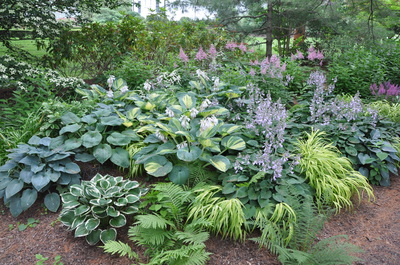
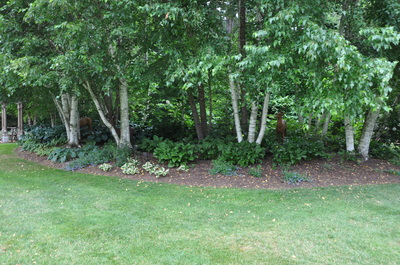
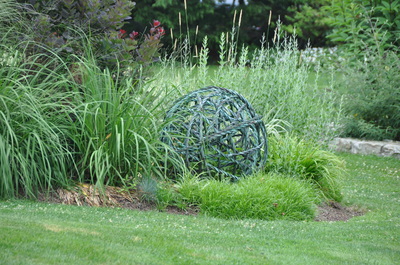
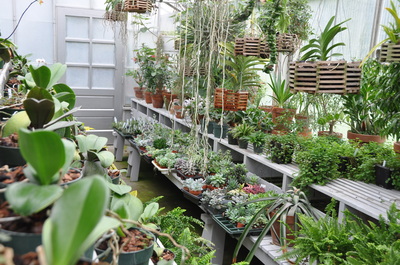
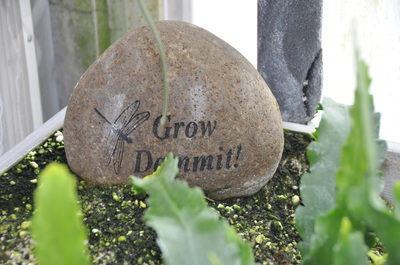
 RSS Feed
RSS Feed
